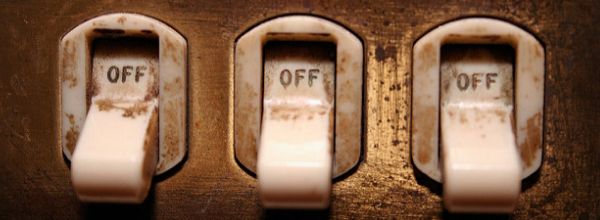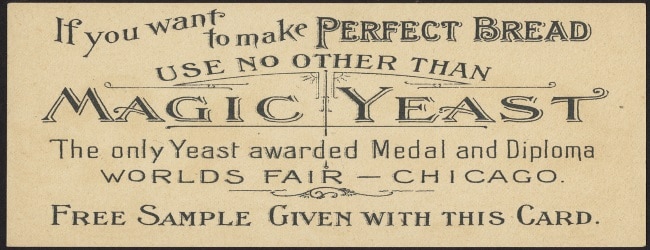Do you wonder if your favorite protein interacts with another protein? Do you wish that you could shine a spotlight on your protein to determine its binding partner? You can use co-immunoprecipitation (Co-IP) to find your protein’s partner.
This article will get you ready for your first Co-IP, provide a handy Co-IP protocol, and discuss Co-IP controls you should include. It will also touch on how you can use Co-IP with SPR applications to gain a detailed insight into how your protein interacts with others.
The Basics of Co-immunoprecipitation Experiments
In essence, Co-IP is just a more delicate version of a traditional immunoprecipitation, which can be thought of as a small-scale affinity purification. With both techniques, you use antigen/antibody interactions to isolate proteins. Your protein-of-interest is “pulled down” and out of solution by an antibody, which is, in turn, captured using beads.
However, a Co-IP requires greater care and more physiologically relevant conditions than traditional IP. When successful, Co-IP pulls down not only your protein-of-interest but also its interaction partners. Thus, Co-IPs are a great way to identify protein complexes. Furthermore, you can use Co-IPs to determine protein–protein interactions under varying conditions. You can then go on to study binding kinetics using SPR techniques.
A Simple Co-immunoprecipitation Protocol
Co-IP protocols are very similar to traditional IP protocols, with the difference that Co-IPs require more gentle assay conditions to maintain the interaction with binding partners. The general steps are as follows (Figure 1).

1. Lyse your Cells
Here you gently break open your cells to make your protein accessible to the antibody. The method of lysis is important in Co-IPs. Non-detergent, low-salt lysis buffers are a popular choice for Co-IP of soluble proteins. This kind of lysis is least likely to disturb any protein interactions.
For less soluble protein complexes, however, lysis buffers may need to contain non-ionic detergents such as NP-40 or Triton X-100. Set time aside to test a number of lysis conditions to find the optimal lysis solution. Some things in science, like the best lysis buffer, just need to be determined empirically.
Don’t forget to use protease inhibitors when lysing your cells to avoid your protein getting eaten up by proteases, which also get released during cell lysis.
The amount matters as well: the more cell lysate you use, the more of your protein you can pull down. The exact amount you should use will vary depending on how abundant your protein is, whether or not you are pulling down overexpressed protein or endogenous protein, and how much interaction it has with binding partners. A good starting point is to use at least 1 mg of total protein, but you may need to optimize this.
Protein concentration matters too. Co-IPs are usually performed in a microcentrifuge tube so you need to ensure your cell lysate is concentrated enough to fit the desired amount of total protein plus other reagents with room to move around.
2. Add Your Antibody
Now it’s time to add an antibody specific to your protein-of-interest. It can be difficult to choose the best antibody for a Co-IP but many antibody manufacturers provide helpful information in their product selection guides.
Here are a few tips for selecting a good antibody for Co-IP.
- Use an antibody that has been previously shown to precipitate the protein (e.g., from the literature).
- Choose a polyclonal antibody rather than a monoclonal antibody, where possible. Polycloncal antibodies will bind your protein in various locations, meaning a greater chance of successful Co-IP, and minimizes potential problems such as if your antibody recognizes the site that binds with the partner you are trying to find.
- If polyclonal antibodies are not an option, choose an antibody that recognizes an epitope on your protein-of-interest that is not masked by any other protein–protein interactions.
- Ensure the antibody binds to the native protein; some antibodies recognize only denatured proteins.
3. Add the Protein A/G Beads
In general, beads are used to physically pull down and purify the antibody–protein complex from the rest of your mixture.
There are two main types of beads you can use: beads coated in protein A or beads coated in protein G. Protein A and G are specialized bacterial proteins that recognize and bind to antibodies. You can also get beads coated in both protein A and protein G. The species and type of your antibody will determine which of these two types of beads you should use. To determine which one is correct for you, consult your antibody’s data sheet. AbCam also has a useful table showing the binding profiles for protein A, protein G, protein A/G, and protein L beads.
Traditionally, immunoprecipitation beads were agarose spheres (50–150 µM in diameter) that allowed purification of the antibody–protein complexes via centrifugation. Centrifugation methods include the use of bead slurries or spin columns.
Spin columns are generally fast and come as part of a kit with highly optimized protocols. However, they may be an expensive option.
Bead slurries, on the other hand, are great for larger complexes that require very gentle handling, without high centrifuge speeds.
More modern techniques use magnetic beads of 1–4 µM in diameter instead of agarose beads. Magnetic beads allow you to isolate your antibody–protein complex by magnets! Magnetic beads may be better for high-weight protein complexes and processing low-volume samples to avoid excessive sample loss during centrifugation. Overall though, agarose beads often have a superior yield since they have a large surface area on which multiple A/G proteins are linked.
4. Incubate
This is the time for the bead–antibody–protein interactions to occur. Incubation times vary from 30 minutes to overnight depending on which bead you choose. Often, the incubation step includes gentle agitation, such as on a rocker plate or tube rotator at low speed because agitation enhances the opportunity for interactions.
5. Collect
After incubation, you will need to collect the antibody–protein complexes. Depending on the method you are using, you will either use magnets or centrifugation to separate the complexes from the rest of the cellular proteins.
6. Wash the Beads
Now that your proteins-of-interest are hopefully tethered to your bead via your antibody it is time to get rid of everything else in your lysate.
Do this by washing your antibody–bead complex a few times to clear away cellular matter not specifically bound by your antibody. Washing also helps reduce non-specific binding of “sticky” cellular components to the beads.
Generally, you wash using cold lysis buffer or cold PBS. You may need to optimize this step to find the right level of stringency that doesn’t disrupt the interacting proteins.
Expert Tip: Save all of your used wash buffer during this step. The wash buffers can show you if your protein-of-interest and any partner proteins were depleted from the lysate. This is critical knowledge for troubleshooting your Co-IP!
7. Elute your Protein(s)
Most SDS-PAGE loading buffers reduce and denature proteins. Therefore, it is often an effective way to separate the proteins from the beads. If you plan on using SDS-PAGE as your detection method (which most of us do), then you can add loading directly to the beads to harvest your protein(s).
If you want to detect your proteins using native PAGE protocol, or you plan on doing enzyme assays with your isolated proteins, then you may need to use something other than SDS-PAGE loading buffer to elute.
A frequently used non-denaturing elution buffer is 0.1M glycine at a low pH (around 2.5–3). However, some proteins will still denature or lose enzymatic activity under these conditions, and some proteins may not dissociate with this treatment. So chalk this up to yet another step to experiment with.
8. Detect your Protein(s)
By now you have isolated your protein(s) and are ready to go. (Yay!) Now the exciting part…taking a peek at your isolated protein-of-interest and its dance partner(s). How you want to do this—SDS-PAGE, mass spectrometry, enzymatic assays, etc.—is up to you.
Expert tip: Remember that the antibody you used to purify your protein is also in the eluent along with your protein-of-interest. And this antibody contamination can be a problem. A western blot may detect the antibodies in your eluent, thus masking the detection of your proteins-of-interest if they are close in molecular weight. (The molecular weight of an antibody’s heavy and light chain are about 50 and 25 kD, respectively.)
You might be able to overcome this issue by 1) using beads covalently bound to the antibody, or 2) ensuring that the secondary antibody chosen for your western blot recognizes a different species than that of your Co-IP antibody.
9. Study the Interaction With Surface Plasmon Resonance Applications
A positive finding in a Co-IP is great news, but you should temper your excitement. Many scientists are led astray by sticky proteins. You should do additional studies to confirm any potential interactions and to ensure that they are specific. For example, you can use mutational analysis to map binding sites. Alternatively, for more specific information about an interaction, consider using an SPR application.
SPR applications not only confirm interactions between binding partners, but also provide quantitative measurements of the affinity, thermodynamics, and kinetics of these interactions in real-time.
An SPR biosensor that allows measurement of the interaction at different temperatures facilitates a thermodynamic analysis of the interaction of interest. With SPR, you can confidently compare affinities between your protein-of-interest and different binding partners.
A major practical advantage of SPR is that you don’t need to label your protein-of-interest (so no more tag-cloning or radioactivity), saving you time and potential hassle with tricky cloning strategies.
If you want to detect and unravel interactions between immune receptors and their ligands, you might want to consider trying a biosensor assay. As explained in a previous Bitesize Bio article, biosensor assays allow you to measure the rate of association and dissociation of ligands to their specific antigen receptors. These assays follow SPR principles. Owing to their advantages and vast capabilities, SPR and its related applications have become the gold standard for kinetic and affinity determination, and SPR principles underline most color-based biosensor chip applications.
Controls for Co-immunoprecipitation
Controls are critical to know that your experiment worked and to troubleshoot if things don’t quite work out. There are several different controls you can use for Co-IPs (Figure 2).

Negative Controls
These controls show that any interaction you see in your experiment is valid. Use beads coated with a non-specific antibody incubated in your lysate and treated the same as your samples. It’s best to choose one from the same species as the antibody in your experiment to better mimic any non-specific binding.
You can also use just the agarose beads without any antibody or vice-versa, to determine the exact cause of any non-specific binding.
If you see your protein-of-interest or potential binding partners in this control, you’ve got non-specific binding and you need to review your protocol.
Positive Controls
Check for the presence of your protein/potential binding partner in the total lysate (without any beads/ Co-IP performed). This ensures that if you aren’t seeing your protein of interest it isn’t due to some issue with the lysate or detection method.
If your protein is in the total lysate, but not in the IP, you will need to troubleshoot each step to ensure that the IP is working.
Purified recombinant protein can be used to ensure that your detection method is working—this could be for either the protein being pulled down or the potential interacting protein.
More Expert Tips for Co-immunoprecipitation
Of course, within these steps, there are many variables that can make your Co-IP successful, or leave you with a sad face at the end. And there are myriad companies, products, and kits from which you can choose. So prepare yourself for some trial and error!
Before we finish up, here are a few more expert tips to delicately sneak a peek at your protein interactions without disturbing them too much.
Pre-clear Your Lysate
“Pre-clear” your lysate by adding protein A/G beads to the lysate before introducing your antibody. Next, spin down the beads and discard them to pull out any cellular components that stick to the beads unspecifically. Then add your antibody/beads and proceed.
Pre-clearing can help to reduce non-specific binding and reduce potential background. However, if you plan to use western blotting to detect your proteins at the end of your Co-IP, pre-clearing is probably not necessary unless you know that a contaminating protein is likely to interfere with your protein/band of interest.
Plan the Order Carefully
Introduction of the bead to the antibody is an important variable that can affect yield. Typically, the antibody is immobilized to the bead by incubating them together before introducing the lysate. However, if the protein-of-interest is present in low concentrations, or if the antibody has a weak affinity for your protein-of-interest, you may need to incubate the protein and antibody first, then add the beads.
Go Gentle, Go Slow
Your goal is to maintain the protein–protein interactions. Your antibody–protein complexes will be physically pulled out of solution by protein A or G conjugated beads. And while the tether from the bead to the antibody is highly specific, it is tenuous.
Therefore, treat your cell lysate with velvet gloves. This includes choosing the right lysis method, keeping your samples chilled, and avoiding overhandling.
Vortexing, mixing with small pipette tips, or using high spins in the centrifuge can all break apart your delicate chain of protein–antibody–bead, and fling your proteins back into solution.
Keep Cool
To keep the proteins in your lysate from getting degraded or altered, perform your Co-IPs at 4°C. A cold room is perfect, especially if you can have all your equipment (e.g., rocker/centrifuge) set up in easy reach.
Co-immunopreciptation Summarized
Co-IPs are a useful and relatively straightforward tool to identify protein–protein interactions. The Co-IP protocol and tips provided in this article can help ensure you get great and meaningful results.
Do you have any extra tips for performing Co-IPs? Let us know in the comments.
Originally published in 2014. Updated and republished in January 2022.




